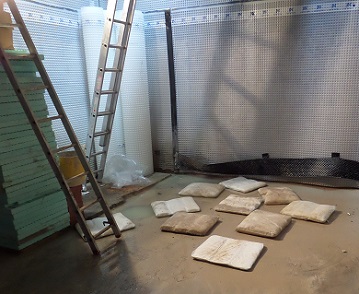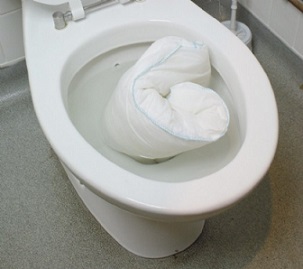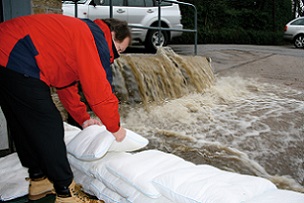 FloodSax alternative sandbags soaking up water in a London basement
FloodSax alternative sandbags soaking up water in a London basement
 A FloodSax down a toilet can prevent filthy floodwater from backing up through it
A FloodSax down a toilet can prevent filthy floodwater from backing up through it
 FloodSax sandless sandbags used as a barrier to stop water getting into businesses and homes
FloodSax sandless sandbags used as a barrier to stop water getting into businesses and homes
What caused the flash floods in London when more than a month of rain fell in less than two hours?
The terrible flash floods in London have brought misery and trauma to thousands of people and shows that flooding really can happen anywhere at any time.
A fierce storm led to three inches of rain – way over the usual monthly rainfall for London - falling across the city in just 90 minutes with water cascading into homes and businesses. It was the third wettest day ever in parts of the capital.
The rich and famous suffered with Queen guitarist Brian May distraught after water wrecked part of his home, ruining treasured possessions and memorabilia.
X-Factor boss Simon Cowell is also reported to have suffered damage to his £12m mansion.
Roads were turned into rivers, rail services stopped running and parts of the underground were closed. Some people’s basements were under 4ft of water with sewage backing up through toilets.
But what causes flash flood and how can people be prepared to protect themselves from flooding?
It looks like the London floods were caused by a cloudburst. During severe thunderstorms a large amount of water may accumulate high up in the sky and if the upward currents are weakened, all this water comes down at one time.
Flash flooding gives homeowners and businesses very little time to react. Sudden torrential rain can drop thousands of tonnes of water on an area in just minutes and, basically, the ground it lands on simply can’t cope with that huge amount of water suddenly descending on it.
Flash flooding – which can often happen during thunderstorms - is often caused when ground is bone hard dry or, ironically, already saturated with rain. Add in the possibility that drains and gullies have not been cleared out by councils and you’ve a recipe for a flooding disaster.
In London, many people are blaming councils for allowing people to build what are known as super basements to provide living space underground which is taking away space where floodwater can permeate. Undeveloped grass and land absorb heavy rain, soaking up the water but if it has been removed it means there is nowhere for the water to go, causing flooding.
Flash floods often hit quite small areas so are impossible to predict but the consequences can be devastating.
Although officially defined as floods that can happen within six hours of heavy rain, flash floods often happen within minutes of a torrential downpour giving people very little time to react to get flood defences in place to save them from the catastrophic consequences of flooding.
The Met Office states: “Flash flooding happens when rain falls so fast that the underlying ground cannot cope, or drain it away, fast enough. Roads can become like rivers and if there is a lot of water it can flood buildings and carry cars away. So, if the rain is falling too fast for the ground or drains to cope, there is a risk of flash flooding.”
The Met Office says a study has found that climate change has increased the risk of floods in England and Wales by at least 20% and perhaps by as much as 90%. A Met Office study has shown that an extended period of extreme rainfall in the UK is now about seven more times likely due to human-induced climate change.
The Met Office adds that the UK’s climate is getting wetter with the highest rainfall totals 4% higher from 2008 to 2017 compared with 1961 to 1990. The amount of rain from extremely wet days has increased by 17%.
Many people don’t realise that councils in the UK have no responsibility to provide sandbags and people are responsible for protecting their own homes and businesses from flooding. Some councils recommend FloodSax sandless sandbags which are a flexible alternative to traditional sandbags. FloodSax are space-saving to store and quick and easy to deploy.
When FloodSax come into contact with water they absorb 20 litres which transforms them from being as light as a pillowcase to being more effective than traditional sandbags in just three minutes.
In their dry state they are ideal at soaking up leaks, spills and floods inside homes and businesses, especially in hard-to-reach places. A rolled up FloodSax popped down a toilet can stop filthy sewage water from backing up through the toilet.
Almost 3 million FloodSax have now been sold worldwide.
To find out more about the causes of flash flooding click here.